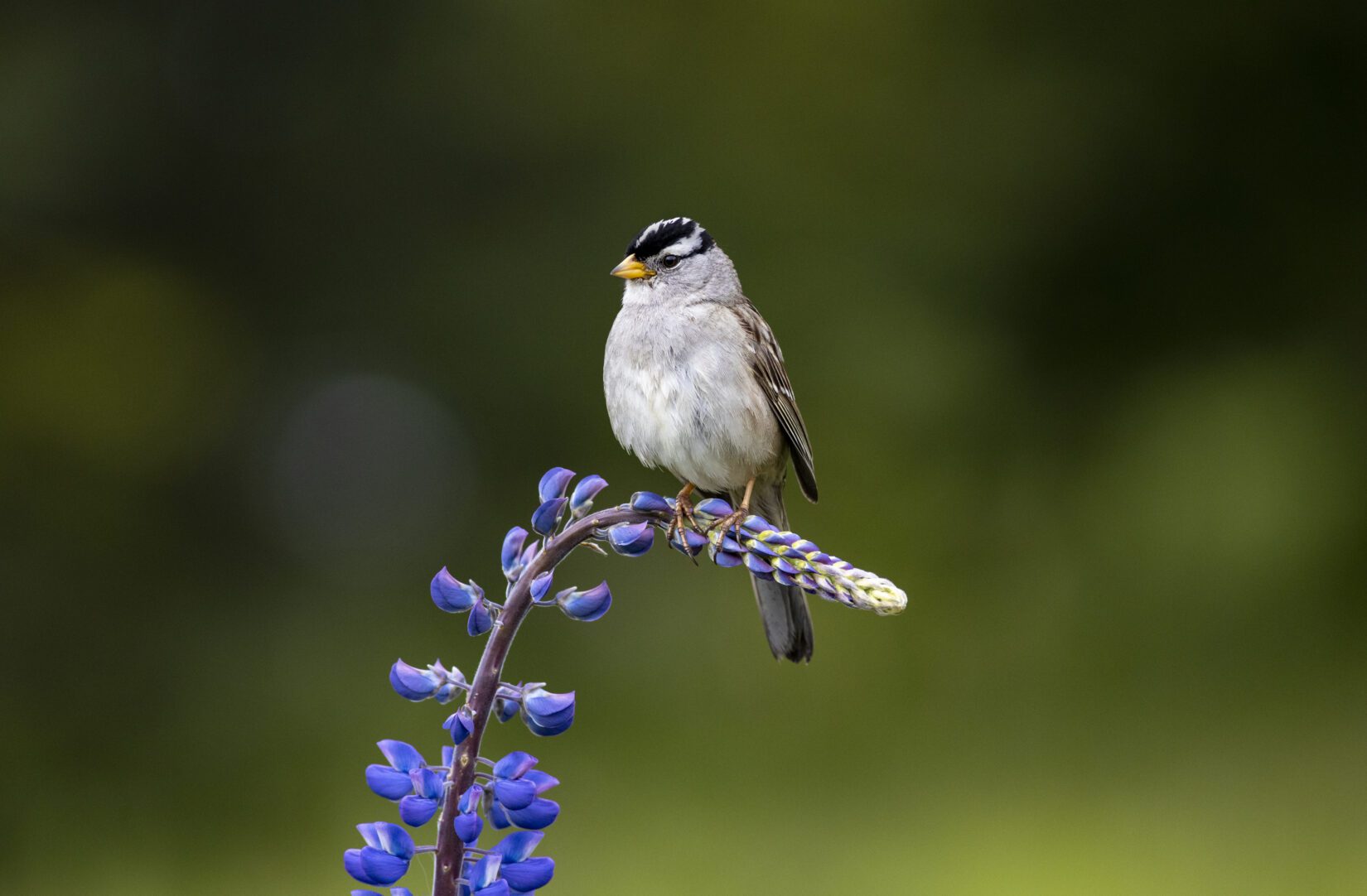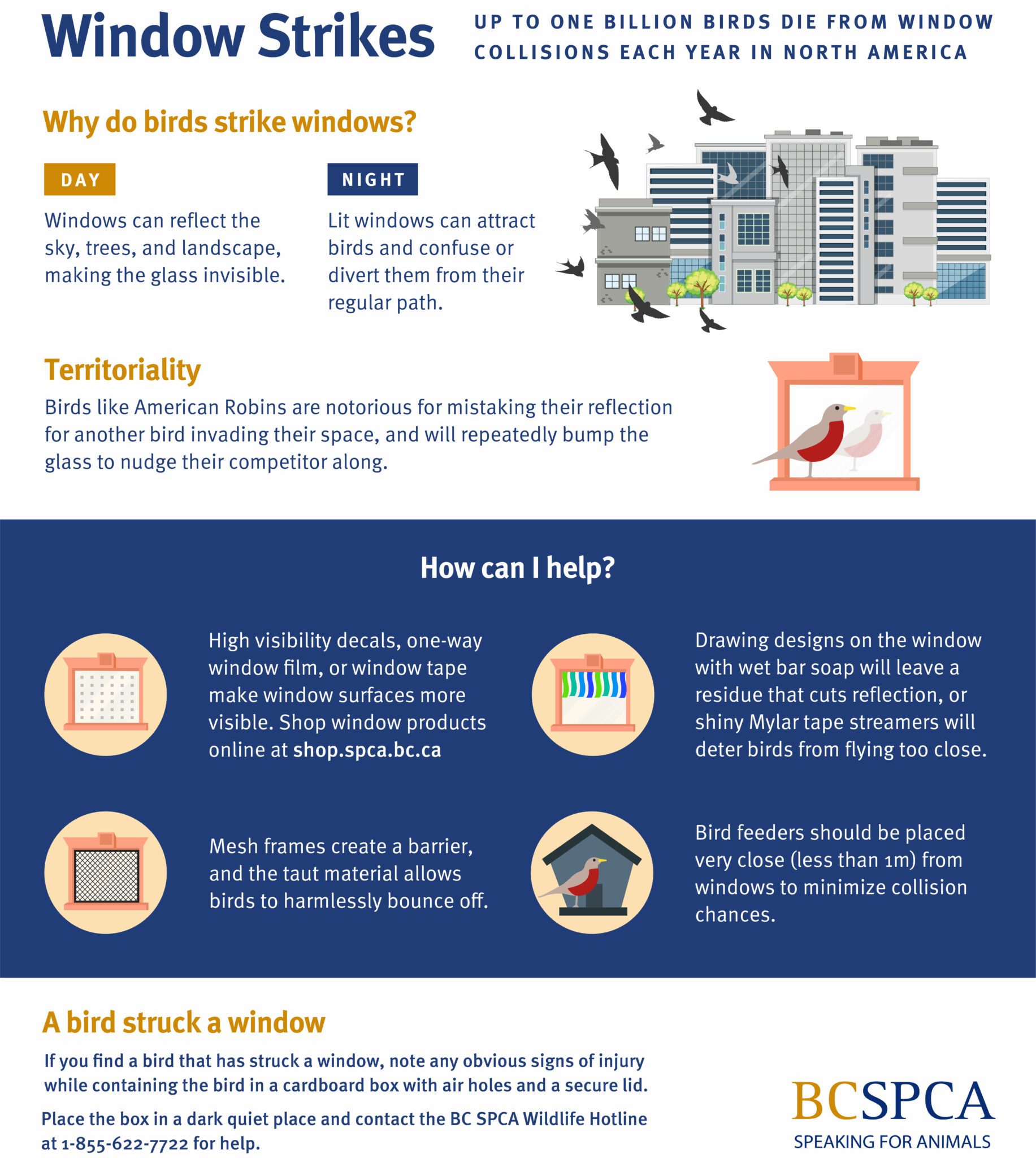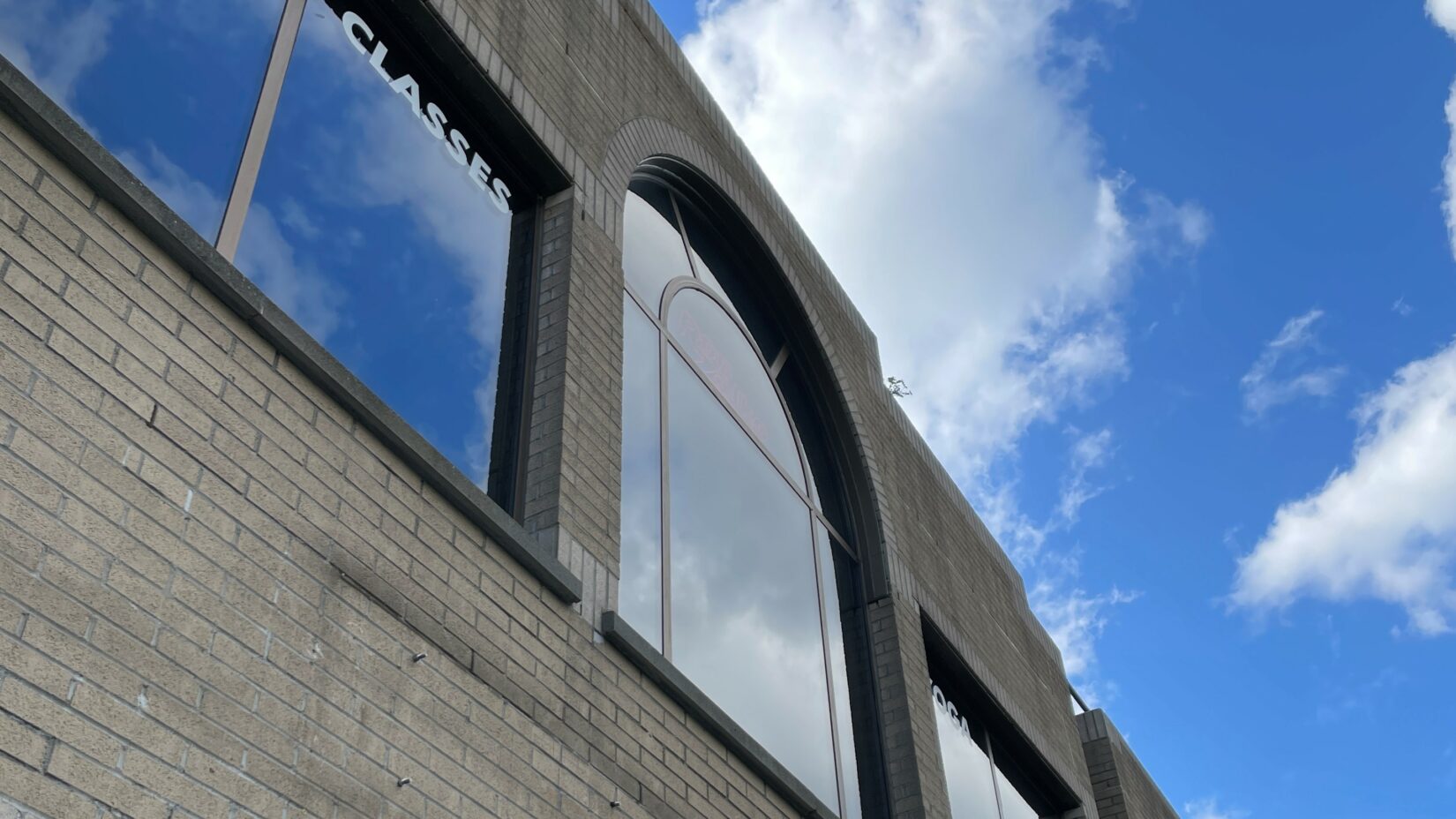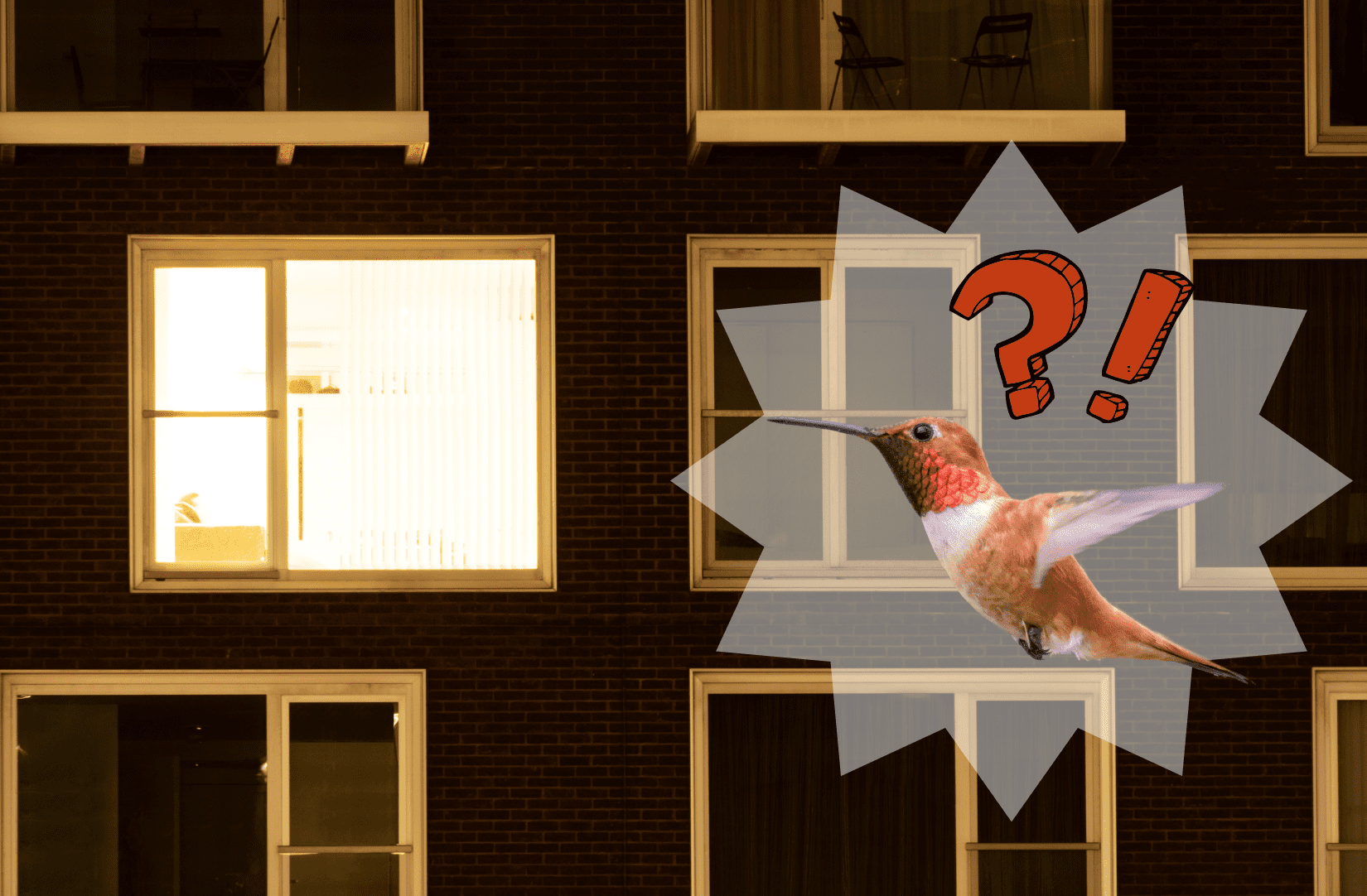While achieving that crystal-clear window is satisfying for a homeowner, for birds, it’s a death trap – to them, it’s hardly visible at all.
There is no set season, day or time when birds are safe from window collisions, and migratory birds are especially vulnerable. In Canada, as many as 16 to 42 million birds are injured or killed by collisions with windows every year. With billions of birds migrating across North America, the risk is significant. Climate change also means their world is changing, and many migratory birds are adapting their migration patterns, leaving them more vulnerable to new challenges, including window strikes.
Collisions with windows are consistently one of the top reasons patients are admitted to Wild ARC. One example includes a sharp-shinned hawk that was brought in for treatment by a homeowner who saw the hawk collide with a window while hunting. The hawk was treated for a fracture and was ready for release after several weeks in care.
Not all birds are so lucky — Download and share our infographic (PDF) to help inform others of what they can do to protect birds from colliding with windows.
Why do birds collide with windows?
1. Reflections
Birds often end up colliding into windows simply because they can’t see the glass. When the windows reflect images of trees or the sky, it looks like an inviting place to fly. They might be attracted to plants on the other side of a window, or if windows are on both sides of the building, birds might think they can fly through to the other side.
This is a year-round hazard for birds, in all types of weather. Windows have become one of the bird’s most costly threats, with more dying from striking them than collisions with power lines, communication towers or vehicles. Whether it’s a hummingbird, a migratory songbird or even a hawk or an owl, they are all victims of this unfortunate situation. Use products on your windows to help break up deadly reflections.
2. Light
At night, artificial light from homes and other buildings can also be dangerous. Lit windows can attract birds and confuse or divert them from their migratory path, especially on rainy or foggy nights.
Once the birds are attracted to a light source, they don’t usually want to leave it. The birds may be drawn into cities where they are more likely to collide with buildings, or they may fly around until they drop from exhaustion.
Help save birds – and energy – by going dark at night. Enjoy movies by candlelight, close your blinds, and try to use motion-activated lights outdoors.
Birds normally use light from the stars, moon and even the setting sun to help them navigate overnight. Cold, bluish-white lightbulbs are the most confusing to birds, because they look most like stars. To best help birds during peak migration seasons:
- Lights out: turn off unnecessary lights to save energy – and birds – when not in use
- Use lights wisely: especially outdoors or near windows, use lights with motion sensors, or have a shield to direct light downwards
- Mind your colours: lights with warmer yellow or red tones are less confusing for birds – avoid lights with cold, bluish-white tones
3. Territoriality
Birds like American robins are notorious for mistaking their reflection for another bird invading their space, and will repeatedly bump the glass to nudge their competitor along.
You may need to temporarily cover the reflection so the bird knows that there’s no competition!
Often, when birds survive a window collision, it will temporarily stun them and they will fly off, as if recovered. In reality, the bird may die later from internal injuries or the bird will then be an easier victim to predators and other dangers.
If a bird happens to hit your window, gently place the bird in a well-ventilated box with a secure lid and seek advice from experts rather than trying to provide care yourself. Program the BC SPCA Animal Helpline 1-855-622-7722, or your local wildlife rehabilitation centre, into your phone so you know who to call for advice.
While it definitely feels great to save an animal’s life, do not attempt to give water, food or any other care to the bird. Birds need specialized care and attention – a local wildlife rehabilitation centre is the best chance for the bird’s survival.

Each year, Wild ARC cares for many birds who have been victims of a window collision. Another example includes a beautiful male Red-breasted nuthatch that had collided with a residential window. Before the homeowner could retrieve them, the bird was caught by an outdoor cat, unable to react quickly enough to escape. Wild ARC’s rehabilitation team found that in addition to suffering from mild head trauma as a result of the window-strike, the bird had sustained soft-tissue damage to the wing and several puncture wounds from the cat.
Fortunately, after nearly a month of treatment – including a supportive wing wrap, painkillers and antibiotics, and housing in a series of progressively larger enclosures to regain his fitness – he was released back to his home in the wild.
How you can help protect birds
Luckily, there are easy steps to help protect birds from window strikes:
- Use specialized decals or tape on your windows to break up reflections
- Hang mylar strips or well-secured (at the top and bottom) strings of beads on windows
- Use window markers or draw on your windows with a bar of soap
- A dirty window is a safer window – relax a little on your cleaning schedule, and know that birds are safer for it
- Find help for birds that have hit a window – contain the bird and contact your local wildlife rehabilitation centre or the BC SPCA Animal Helpline 1-855-622-7722 for next steps.

Remember that products should be applied to the outside of your window to break up reflections and make the glass more visible. Products like Feather Friendly® or CollidEscape™ tape create a visual cue that the glass is there. Along with decals or tape, drawings, hanging mylar strips, or well-secured strings of beads can be effective and visually-pleasing solutions that help birds avoid glass. Ensure that strips or strings of beads are securely attached at the top and the bottom of the window to reduce potential entanglements if birds were to fly into the material.
The more coverage on the window, the better. By making these simple changes, you are truly saving lives!




